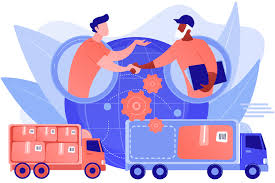Hello!
 You have often come across the phrase, “Customer is the king.” But have you ever tried to know how important the customer is to your business or what is his worth to you? This number is the Customer Lifetime Value. Knowing the figure associated with it lets you decide how much you are willing to spend to keep them happy and around. The crucial thing to remember here is that the more positively you influence this number, value, or metric, the more growth you can achieve. However, discovering ways to increase CLV is where most companies need to improve.
You have often come across the phrase, “Customer is the king.” But have you ever tried to know how important the customer is to your business or what is his worth to you? This number is the Customer Lifetime Value. Knowing the figure associated with it lets you decide how much you are willing to spend to keep them happy and around. The crucial thing to remember here is that the more positively you influence this number, value, or metric, the more growth you can achieve. However, discovering ways to increase CLV is where most companies need to improve.
This article will enlighten you about the strategies to increase customer lifetime value (CLV or CLTV) and also give you a little more insight into what it is truly all about.
Customer Lifetime Value (CLV or CLTV)
Some call it CLV, and others prefer the term CLTV. No matter which term you use, both refer to the same thing: the customer’s lifetime value. In terms of definition, it is the average income or returns you can generate from customers over the lifetime of their account. Simply put, it is the amount you would earn from a customer before churning.
For example, say your product is subscription based (like maintenance services, licenses, etc.). So if the customer signs up for a year, the amount he pays during the entirety of that period will establish his or her CLV or CLTV.
CLV is a measurable indicator that can be calculated using the customer data that you have. It has three main elements:
a measurable indicator that can be calculated using the customer data that you have. It has three main elements:
- Average Order Value or AOV
- Purchase Frequency or PF
- Estimated Customer Lifetime or ECL
Calculating CLTV
The calculation to find CLTV is simple. First, you need to find out the Customer Value or CV. To do that, you need to use the following formula:
AOV X PF = CV
Next, its time to find the CLTV for which the formula is:
CV X ECL = CLTV
 Let us now see it with the help of an example. Your customers spend an average of $200 every time they buy. The average customer purchases from your store 3 times a year and tends to stick around for at least 5 years.
Let us now see it with the help of an example. Your customers spend an average of $200 every time they buy. The average customer purchases from your store 3 times a year and tends to stick around for at least 5 years.
Here, the AOV is $200, PF is 3, and ECL is 5.
So, the CV comes to $600 (200 X 3).
And CLTV comes to $3,000 (600 X 5)
When you multiply the CLTV by the number of your current customers, you get a fair idea of how much you will earn from them in the coming years. This is your profit margin.
Why Is It Crucial to Ascertain CLV?
 Now that you clearly understand CLV, your next question would be, “Why is it important?” To answer this question, one needs to know a simple fact: A typical SaaS company spends 5 to 7 times more on acquiring new customers than on maintaining existing ones.
Now that you clearly understand CLV, your next question would be, “Why is it important?” To answer this question, one needs to know a simple fact: A typical SaaS company spends 5 to 7 times more on acquiring new customers than on maintaining existing ones.
In a subscription business, CLV provides a customer-centric outlook that helps guide sales and marketing strategies for acquisition, retention, cross-selling, and upselling. Ideally, the cost of acquiring a customer should be much lower than the money that you generate from them as a customer.
This is basic maths, but unfortunately, many times, its implications are missed altogether.
6 Strategies to Increase Customer Lifetime Value
Sitting hands on hand, doing nothing, will not help your business in any way. The same is true if you wish to increase the CLV. You need to plan and strategize to get things moving in the right direction. If you don’t know where to start, the following strategies will prove to be especially useful in helping you increase customer lifetime value:
1. Ease The Onboarding Process
When someone comes to your online store, they want to see simplicity and orderliness. They wish to see a website that is easy to navigate and where all links work perfectly. Consequently, you must ensure your business website is not slow and sluggish with broken links.
 Do not overwhelm the visitor by asking for too much information. Give them some breathing space. Allow them to take in what you have to offer before jumping in to collect data upfront. The less pressure you put on the visitor, the more likely they are to return and make a purchase. If you have to collect data, do it in the background, within the prescribed rules.
Do not overwhelm the visitor by asking for too much information. Give them some breathing space. Allow them to take in what you have to offer before jumping in to collect data upfront. The less pressure you put on the visitor, the more likely they are to return and make a purchase. If you have to collect data, do it in the background, within the prescribed rules.
Leverage the power of AI and ML to guide the customer. A conversational AI platform can steer them to the right product. With its help, you can use gentle persuasion and entice them to complete a purchase.
2. Deliver Personalized Experiences
Personalization is not just addressing the customer by their name. Instead, it goes a step further. Today, personalization means suggesting products that are related to their past purchases or are interest-based. These recommendations make the customer feel that the company has a personal interest in wooing them.
It makes them feel important. Nonetheless, the most crucial thing is to not become an irritating entity with a slew of recommendations and offer emails. Send them out only when you have something unique to share.
 An excellent place to start is to have a reliable e-commerce order management system. It will help you manage the complete lifecycle of the order. You can use it to track orders and send notification emails to the customer.
An excellent place to start is to have a reliable e-commerce order management system. It will help you manage the complete lifecycle of the order. You can use it to track orders and send notification emails to the customer.
You can ask for feedback once the order is delivered. Furthermore, it acts as a repository of customer information and their purchases, based on which you can deliver personalized experiences to them.
3. Improve Communication
Limiting communication to shooting an email or answering a query over the phone is not a smart move. You need to move with the times. Cover all major communication channels like phone, email, SMS, social media, etc., because all customers tend to have different preferences. Also, empower your workforce with AI-powered tools like conversational AI platforms so that they don’t waste time answering mundane queries and customers don’t have to wait in a queue to talk to the concerned person.
Be courteous at all times and open to accepting criticism and accolades. These will simply highlight your areas of improvement and your strengths. Working on your weaknesses, all the while respecting the customers, will make you a preferred choice of the masses.
4. Grow Your Tribe by Inspiring Loyalty
 Customer loyalty towards a brand grows when the business is committed to going the extra mile for its customers. Give them member privileges like loyalty points and preferential treatment. Send out special discounted offers and other reward schemes their way. These small things make the customer happy, and happy customers will stick with you far longer than others.
Customer loyalty towards a brand grows when the business is committed to going the extra mile for its customers. Give them member privileges like loyalty points and preferential treatment. Send out special discounted offers and other reward schemes their way. These small things make the customer happy, and happy customers will stick with you far longer than others.
5. Cross Selling and Upselling
When a customer visits your store, they come looking for a specific thing. For every business, every footfall of the customer is an opportunity to drive value. You can recommend products that go well with what the customer has added to their cart or show them what all others who bought the same product are purchasing. This opportunity to cross-sell and upsell is often overlooked. This means the brand loses the opportunity to further sales, leaving the customer feeling inconsequential.
Drive value by waiving fees or offering special discounts on purchases above a specific value. The whole point is to make every opportunity count.
6. Provide the Best Possible Customer Service
 The backbone of every business is its customer service. This is one department that continuously handles the customers directly or indirectly. Consequently, empowering them with the right tools, like an eCommerce order management system to track sales, dispatches, delivery status, etc., helps them answer queries better and faster. Invest in their training and reduce their workload by deploying AI-powered tools.
The backbone of every business is its customer service. This is one department that continuously handles the customers directly or indirectly. Consequently, empowering them with the right tools, like an eCommerce order management system to track sales, dispatches, delivery status, etc., helps them answer queries better and faster. Invest in their training and reduce their workload by deploying AI-powered tools.
According to a study conducted by Forbes, businesses tend to lose as much as $75 billion because of poor and inefficient customer service. You don’t want to be one of them. So how can you be different? For starters, provide 24/7 omnichannel customer support. Next, build a solid knowledge base by answering FAQs, publishing informative articles, having a dedicated blog where all information about your products and services is available, and so on.
The Bottomline of Increasing Customer Lifetime Value
 CLV is not “just another metric” a business has to track. It is, in fact, a key metric that lays the foundation for future strategies. With its help, you can ensure your customer acquisition cost remains low, marketing and sales campaigns are effective and within budget, and fortify the long-term growth of your enterprise. There is no clear-cut strategy that will work universally.
CLV is not “just another metric” a business has to track. It is, in fact, a key metric that lays the foundation for future strategies. With its help, you can ensure your customer acquisition cost remains low, marketing and sales campaigns are effective and within budget, and fortify the long-term growth of your enterprise. There is no clear-cut strategy that will work universally.
You must keep playing with them until you get the desired results. Even then, the efforts to woo existing and prospective customers have to be consistent. Start publishing more unique and relevant content, make your presence felt on social media, and give the best possible customer service.
To move with the times, invest in a suitable conversational AI platform. Do not hesitate to embrace new tools like the order management system. It will keep you in the loop at all times regarding the stock and the movement of items from your store to the customer’s doorstep. Take advantage of every opportunity to impress your customers; finally, don’t hesitate to ask for help when overwhelmed or stuck in a bind.
Also read:
- Apple TV vs. Fire Stick vs. Roku: Who Wins?
- 7 Strategies For Optimizing Your Accounts Receivable
- Best Ways to Organize Your Fleet
Thank you!
Join us on social networks!
See you!






